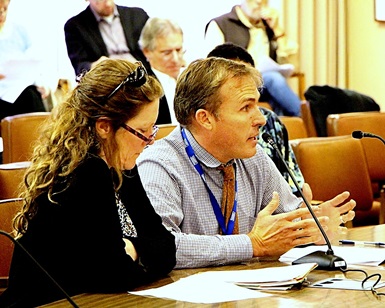San Rafael, CA – Marin County, which once suffered from some of the highest breast cancer rates in the nation, is celebrating new statistics that show a continued decline in breast cancer rates.
 Rochelle Ereman, Epidemiology Program Manager with the Marin County Department of Health and Human Services (HHS), said there is not only a continued downward trend in both incidence and mortality, but Marin’s rates are no longer higher than rates in California.
Rochelle Ereman, Epidemiology Program Manager with the Marin County Department of Health and Human Services (HHS), said there is not only a continued downward trend in both incidence and mortality, but Marin’s rates are no longer higher than rates in California.
“We are thrilled that fewer women are getting breast cancer and fewer women are dying of this disease,” Ereman said. “While we will continue to monitor rates and investigate the causes of breast cancer through the Marin Women’s Study, we are very encouraged by this news.”
Previously, Marin’s breast cancer incident rates garnered national attention because they exceeded rates for the San Francisco Bay Area, California and the United States. Today, Marin’s rate, at 130 cases per 100,000 for white non-Hispanic women, is 31 percent lower than at the peak in 2001, according to a new report released by Dr. Christina Clarke and colleagues at the Cancer Prevention Institute of California, the cancer registry responsible for monitoring cancer in the Bay Area. Rates for most other racial/ethnic groups in Marin are comparable to those for non-Hispanic white women.
Breast cancer mortality has continued to decline in Marin and statewide. The rates in 2013, at 16 deaths per 100,000, were 65 percent lower than in 1988 when statewide cancer registration began. Rates declined on average 3.2 percent per year from 1988 to 2013. Fewer women are dying of breast cancer than ever before.
The drop in breast cancer incidence is likely because of a variety of factors, including a drop in use of combination hormone replacement therapy (HRT) for menopausal women previously reported by Ereman and fellow Marin Women’s Study collaborators. Local researchers say that the evidence does not point to changes in mammography screening as a reason for the latest decline.
“The increased incidence of in situ cancer suggests a decline in mammography screening likely is not a key factor contributing to the decline in invasive breast cancer in Marin County,” said Dr. Karla Kerlikowske, Professor of Medicine and Epidemiology and Biostatistics at the University of California at San Francisco.
Dr. Matthew Willis, the Marin County Public Health Officer, said the latest breast cancer figures show an encouraging trend.
“While we hope that this trend will continue, breast cancer prevention remains a priority because it's still the leading cancer diagnosis for women outside of skin cancer,” Willis said. “While we work to better understand this disease, it's important to remember that well established practices like maintaining a healthy weight, avoiding excess alcohol, and getting regular exercise are steps everyone can take to lower their breast cancer risk."
Photo caption: Dr. Matt Willis, Marin County Public Health Officer, speaks to the Board of Supervisors about breast cancer rates on October 6, 2015, as Epidemiology Manager Rochelle Ereman looks on.